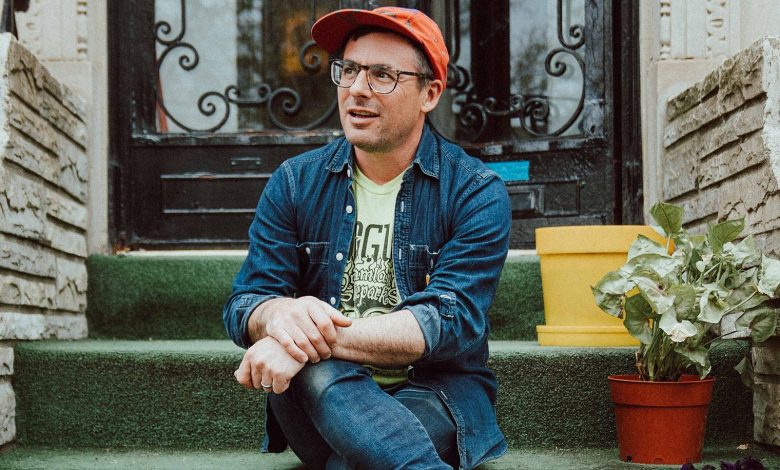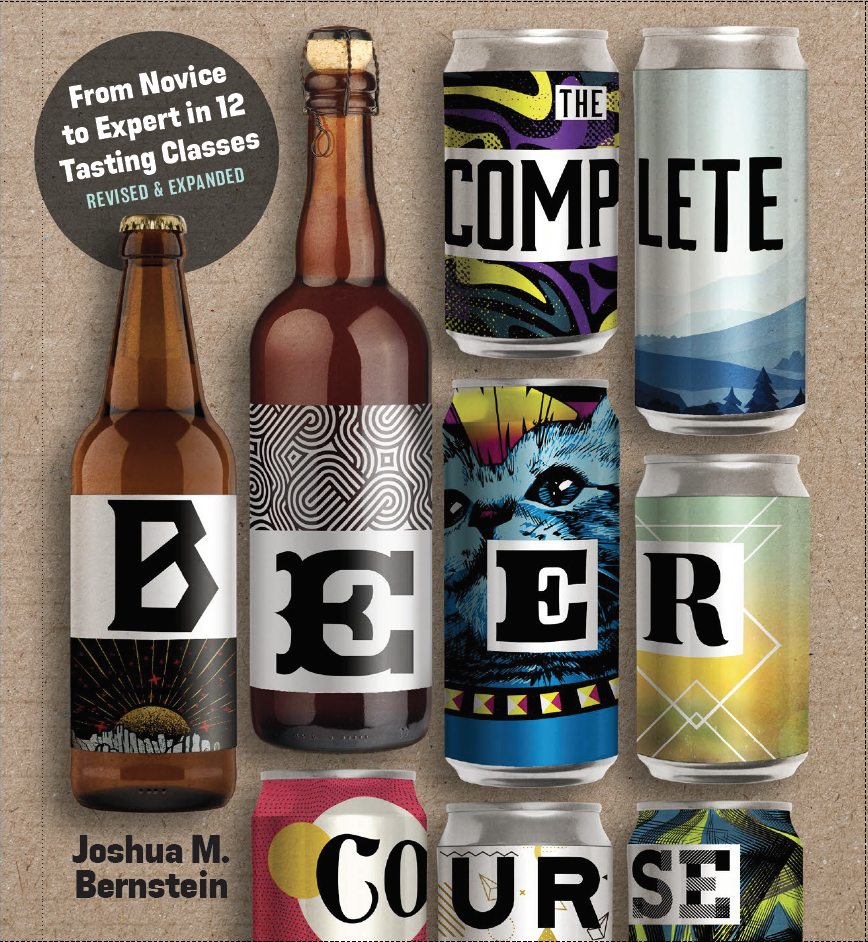
A 22-year-old armed with a journalism degree but no idea how to use it, Joshua M. Bernstein moved to New York City at the turn of the century, working temp receptionist gigs as he contemplated his future. Much of that rumination took place in Manhattan bars, where his analytic nature allowed him to pick up on interesting subjects and trends that he went on to pitch stories about to newspapers, magazines and online outlets. NYC’s drinking culture became his beat, and over time he found himself drawn to an emerging beverage within it…craft beer. It spoke to him and soon he spoke to readers about the burgeoning medium, first in articles and columns for outlets such as Imbibe, Time Out New York, New York Press and Gourmet, then in books such as 2011’s Brewed Awakening, and The Complete Beer Course, an instructional work that turns ten this year. Those were followed by four more books, including Complete IPA, Homebrew World and Drink Better Beer. All along, Bernstein continued his work as a freelance editor and journalist writing about–what else–beer for Men’s Journal, Food & Wine, the New York Times and more. Bernstein is the most prolific beer-writer of his generation, but he’s nowhere near finished. He has more irons in the fire and his updated edition of The Complete Beer Course will hit shelves in June. We were recently able to book some time with Bernstein to talk about that guide and his approach for updating it to reflect modern-day craft-beer culture.
How long did it take for you to compose the first edition of your comprehensive tome?
From signing the contract to the book hitting shelves, the process took around two years. I started working on the book in late 2011, on the heels of releasing Brewed Awakening. When I was on tour for the book, I realized there was a need to talk about how brewing’s present connects to its past, helping people understand how beer styles started and evolved over the decades and centuries. That idea guided me as I began writing The Complete Beer Course, aiming to create a comprehensive yet convivial and approachable survey of beer. By that point I’d been writing about beer for the better part of a decade, and I had scores of interviews, stories and research to draw on. Still: There were lots of late nights with empty beer bottles stacked by my desk as I tried to separate fact from historical fiction.
Why was the time right for an update to The Complete Beer Course?
By the tail end of the 2010s, the American brewing industry was evolving and growing at a breakneck clip. Newfangled styles and brewing techniques such as the hazy IPA, pastry stout and kettle sour were bubbling up, and customers were queuing for hours for freshly canned four-packs. Cities big and small developed thriving brewing scenes, and our collective framework and understanding of beers grew fragmented. No longer were people consuming the same craft beers available from coast to coast. People were consuming what was available in their hometowns, or traveling to the nation’s new brewing hot spots. Welcome to Vermont! Might we interest you in a can of Alchemist’s Heady Topper? Cans! Taprooms! Genetically modified yeast strains! Hard seltzers! Hard kombucha! It was time to rethink what it meant to write a book that acted as a compass to guide people through the increasingly crowded and confusing world of craft brewing, especially with better beer sold at gas stations, supermarkets and sports stadiums alike.

Explain your process, how long it took and some key updates?
I started sketching out the updates in late 2019, after the release of Drink Better Beer, envisioning a manageable renovation. I’d swap in some new beers, update labels, add a few new profiles and have a new edition. Then the world went viral in 2020. Overnight, hard seltzer was no longer breweries’ biggest threat. I watched breweries close, scramble to stay alive, and pivot, pivot, pivot, spinning themselves into circles. How do you rewrite a beer book during a global pandemic? During lockdown, six feet away from everyone but my family, I decided to tear down the entire book and rebuild it.
Ten years ago, intrepid drinkers crisscrossed the country to hit beer festivals and visit brewing meccas, putting cities like Portland, Denver and San Diego on their hoppy bucket list. Brewer-led beer dinners and tap takeovers crowded social calendars, and beer bars served as doorways to untold worlds of fermented flavor. You needed to travel and seek out better beer. That was off the table for the foreseeable future. So I took out recommendations of beer festivals, bars and beer-focused restaurants to hit. Businesses close even in the best of times. And these were most certainly not the best of times.
Instead, I decided to put the focus on people. I added new styles and deepened the stories of classic styles by going directly to the sources, interviewing everyone from Olivier Dedeycker of Brasserie Dupont to discuss saisons and asking Rodenbach brewmaster Rudi Ghequire about his brewery’s foeders and Flanders red ales. Above all, I added new profiles of people that work within the brewing industry. Forget headline-grabbing brewmasters. I wanted to shine a light on the canning-line operators, lab technicians and sales people that drive the industry, hopefully showing both the diversity of jobs and the steadily increasing diversity of the industry itself. “
Joshua M. Bernstein, Author, The Complete Beer Course
The process took some three years. Lo, I had a very strong glass of celebratory bourbon when the book finally went to the printer.
How has it been seeing The Complete Beer Course become a trusted work on the subject of beer?
Be it a book, painting or album, whenever you release any work of art you hope that people dig what you’ve done. I mean, it’s years of my life to bring a book from a brain spark to a hardcover copy. It’s been so gratifying to hear from people that read the book. It’s inspired so many people to enter the industry and served as a clear-eyed guide to beer to drinkers around the globe. It’s been wild to have a career in beer. It’s not a future I could’ve pondered as a 22-year-old, pounding beers in dive bars and sending out blind pitches to editors at magazines and newspapers, hoping that someone would give an unproven writer a shot.
What other projects are you working on?
On the journalism side of things, I’m still writing up a storm and I’ve started running beer events again in New York City. I’m super-happy that we’ve brought back our homebrew tours. Back in 2009, before the brewery boom kicked off in NYC, I took beer-drinkers on monthly tours of homebrewers’ homes. Consider it a voyeuristic bar crawl through NYC apartments. Turns out that 14 years later, people still want to drink beer with strangers inside strangers’ homes. Connecting with people is more important than ever. Beyond that, I’m consulting for breweries and tourism boards through Want Beer, Will Travel, helping them better center their stories within the broad world of beer. Also, I’m very excited for my garden this year. Making fermented hot-pepper sauce is a fun little hobby.

